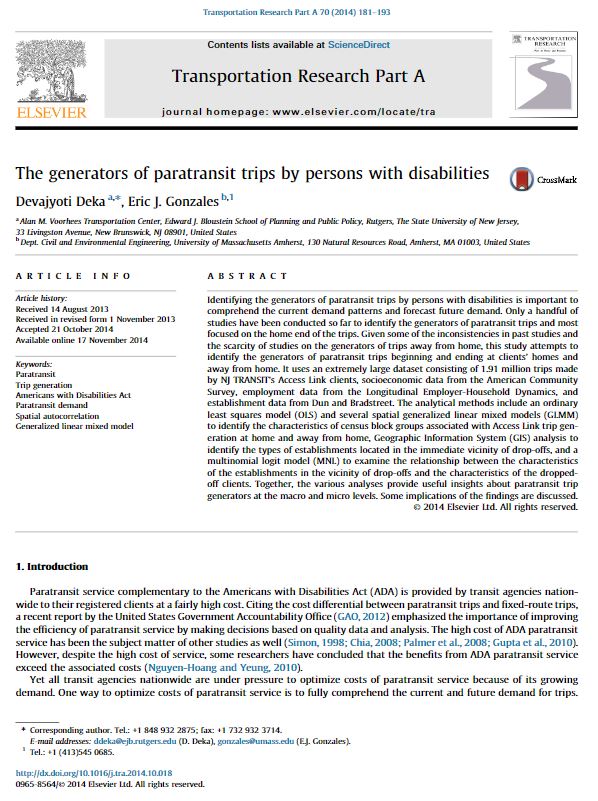Abstract
Identifying the generators of paratransit trips by persons with disabilities is important to comprehend the current demand patterns and forecast future demand. Only a handful of studies have been conducted so far to identify the generators of paratransit trips and most focused on the home end of the trips. Given some of the inconsistencies in past studies and the scarcity of studies on the generators of trips away from home, this study attempts to identify the generators of paratransit trips beginning and ending at clients’ homes and away from home. It uses an extremely large dataset consisting of 1.91 million trips made by NJ TRANSIT’s Access Link clients, socioeconomic data from the American Community Survey, employment data from the Longitudinal Employer-Household Dynamics, and establishment data from Dun and Bradstreet. The analytical methods include an ordinary least squares model (OLS) and several spatial generalized linear mixed models (GLMM) to identify the characteristics of census block groups associated with Access Link trip generation at home and away from home, Geographic Information System (GIS) analysis to identify the types of establishments located in the immediate vicinity of drop-offs, and a multinomial logit model (MNL) to examine the relationship between the characteristics of the establishments in the vicinity of drop-offs and the characteristics of the dropped-off clients. Together, the various analyses provide useful insights about paratransit trip generators at the macro and micro levels. Some implications of the findings are discussed.
